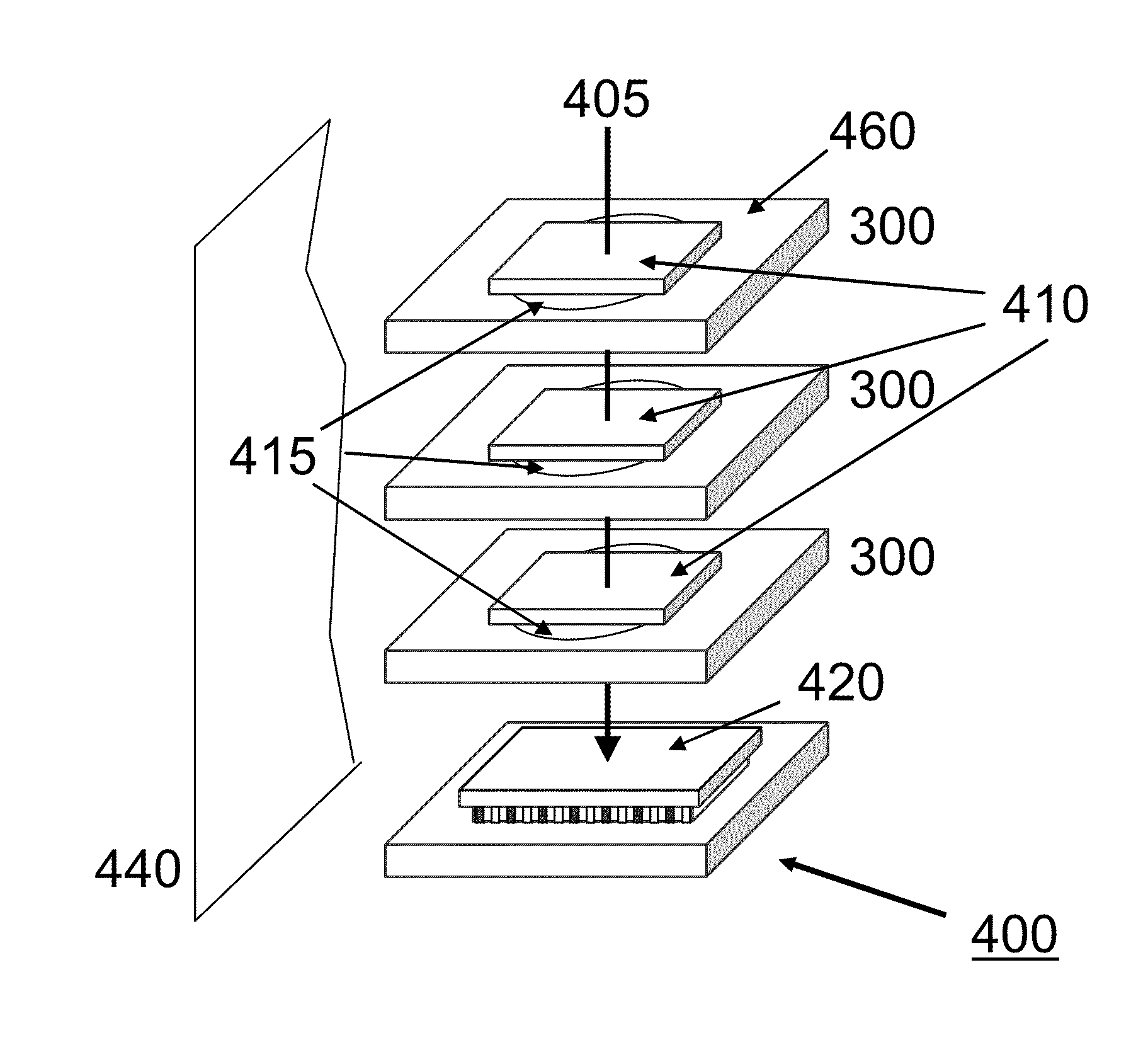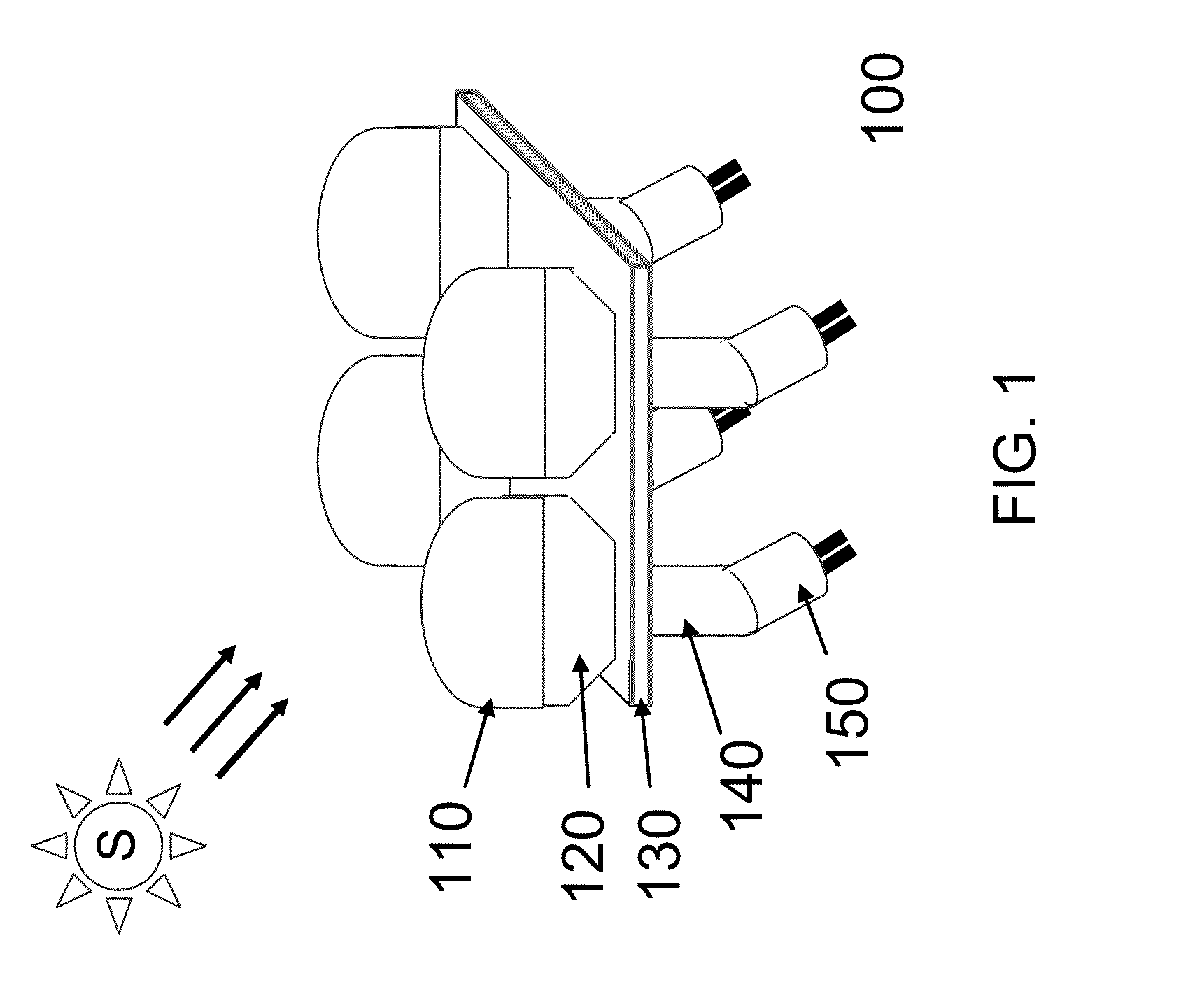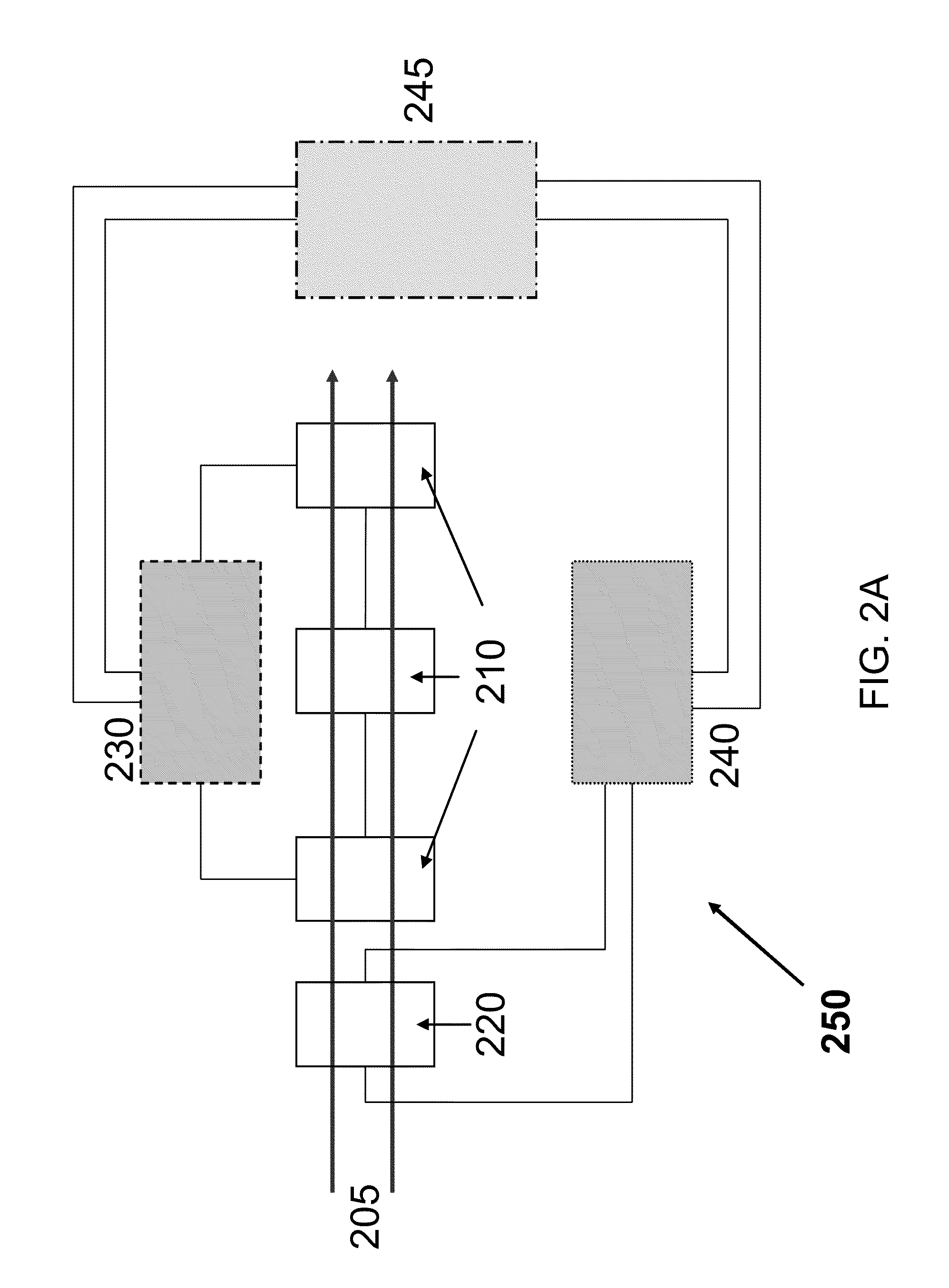Solar-To-Electricity Conversion Sub-Module
a technology of solar energy and conversion sub-module, which is applied in the direction of thermal-pv hybrid energy generation, pv power plants, sustainable buildings, etc., can solve the problems of reducing affecting the efficiency of solar energy conversion, and affecting the conversion efficiency of solar energy
- Summary
- Abstract
- Description
- Claims
- Application Information
AI Technical Summary
Benefits of technology
Problems solved by technology
Method used
Image
Examples
Embodiment Construction
[0063]A novel modular platform integrates solid-state photovoltaic and thermionic or thermoelectric devices with the solar collection and concentration optics for the solar-to-electricity conversion. Both the conversion efficiency and the heat handling capability under a focal area of high solar concentration are increased by cascading photon-to-electricity devices such as photovoltaic devices and heat-to-electricity devices such as solid-state thermionic and thermoelectric devices, each of which is made of specific composition.
[0064]Embodiments of the present invention thus provide a conversion system that is scalable for the photovoltaic device of area from a few hundreds of micron square to a few tens of centimeter square with the corresponding optical collection area that gives a concentration factor from 250× to 5,000×. The overall conversion efficiency of the solid-state solar engine module of the present invention has potential to achieve 50% or more of which the conversion f...
PUM
 Login to View More
Login to View More Abstract
Description
Claims
Application Information
 Login to View More
Login to View More - R&D
- Intellectual Property
- Life Sciences
- Materials
- Tech Scout
- Unparalleled Data Quality
- Higher Quality Content
- 60% Fewer Hallucinations
Browse by: Latest US Patents, China's latest patents, Technical Efficacy Thesaurus, Application Domain, Technology Topic, Popular Technical Reports.
© 2025 PatSnap. All rights reserved.Legal|Privacy policy|Modern Slavery Act Transparency Statement|Sitemap|About US| Contact US: help@patsnap.com



